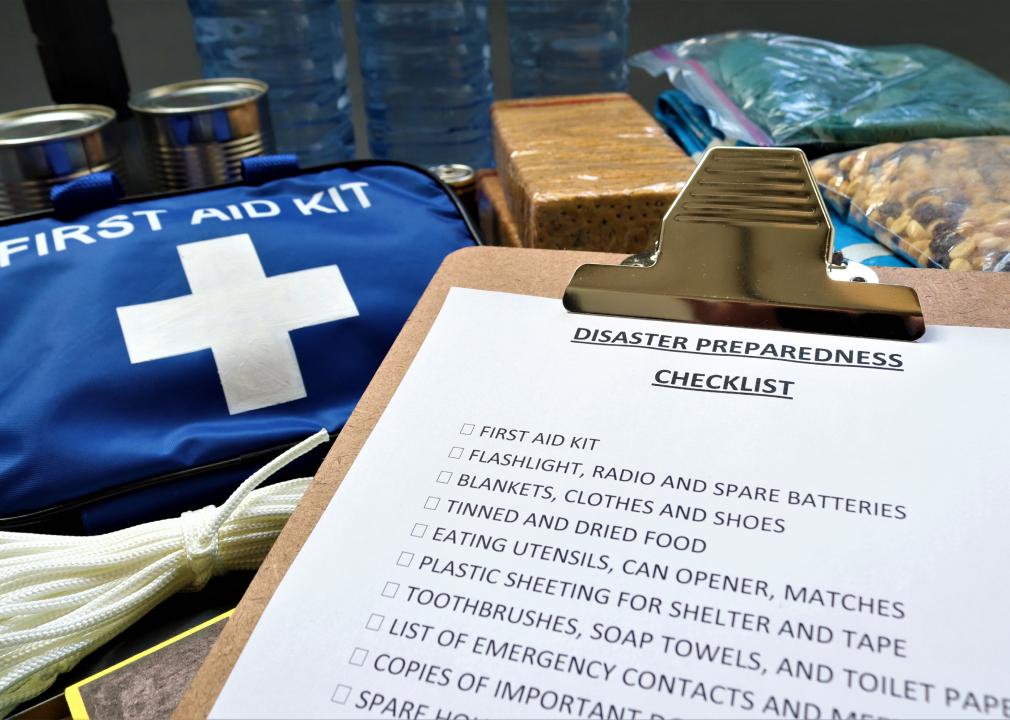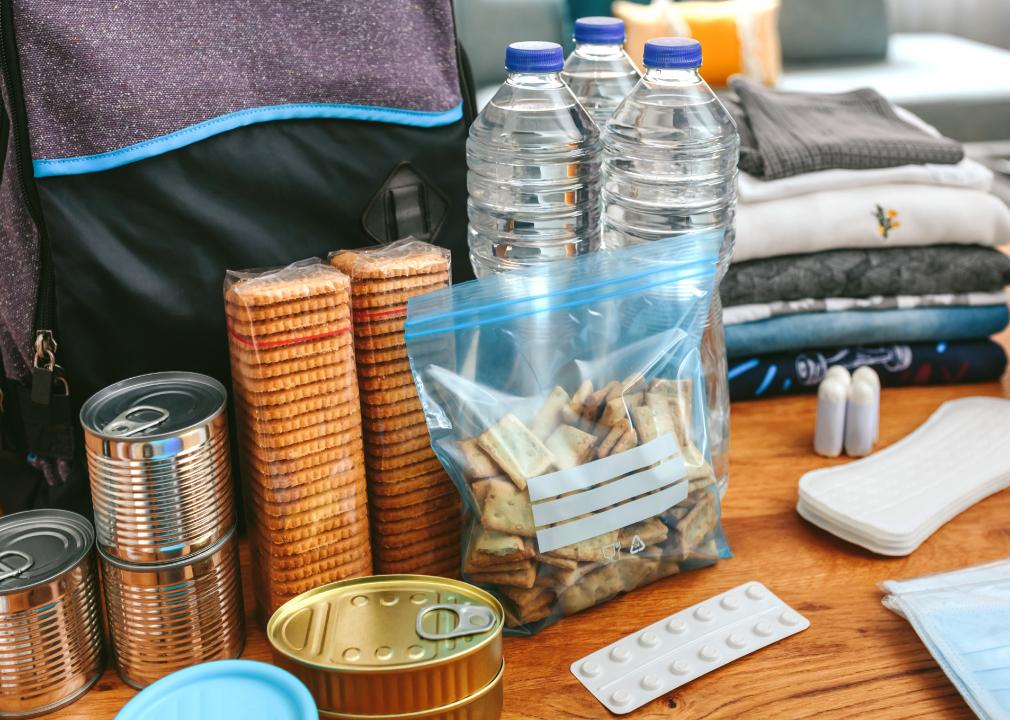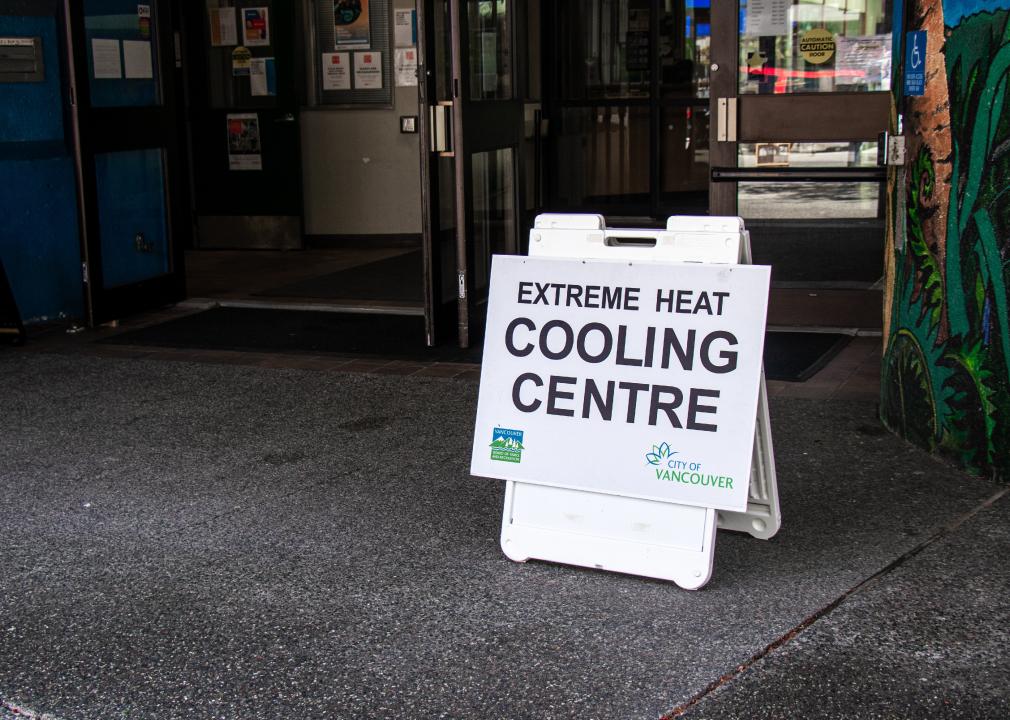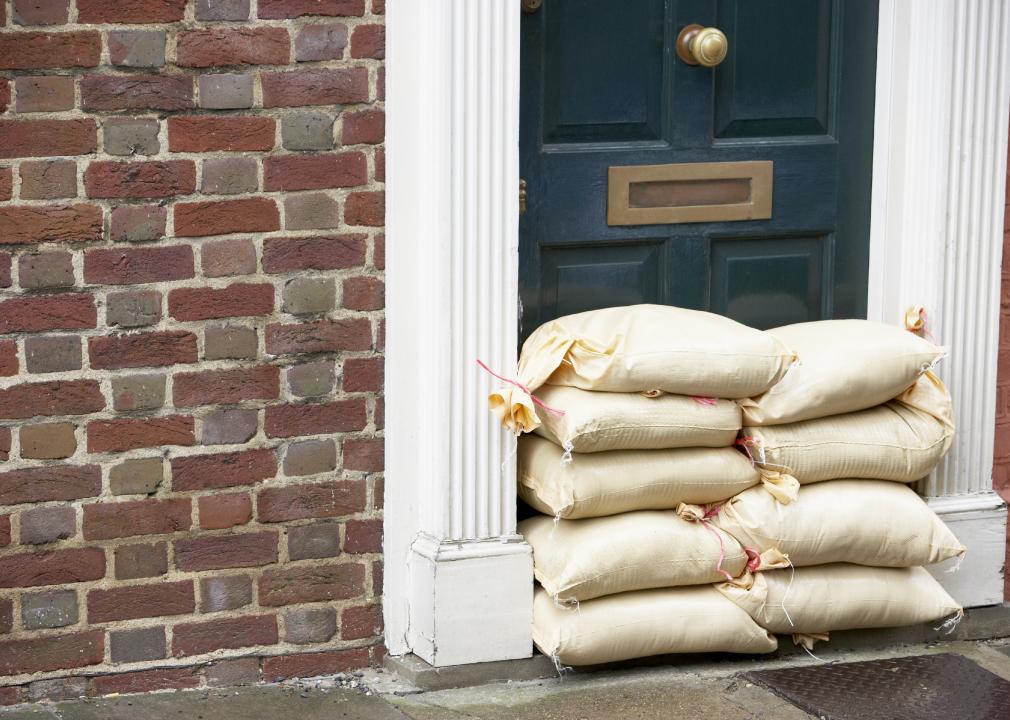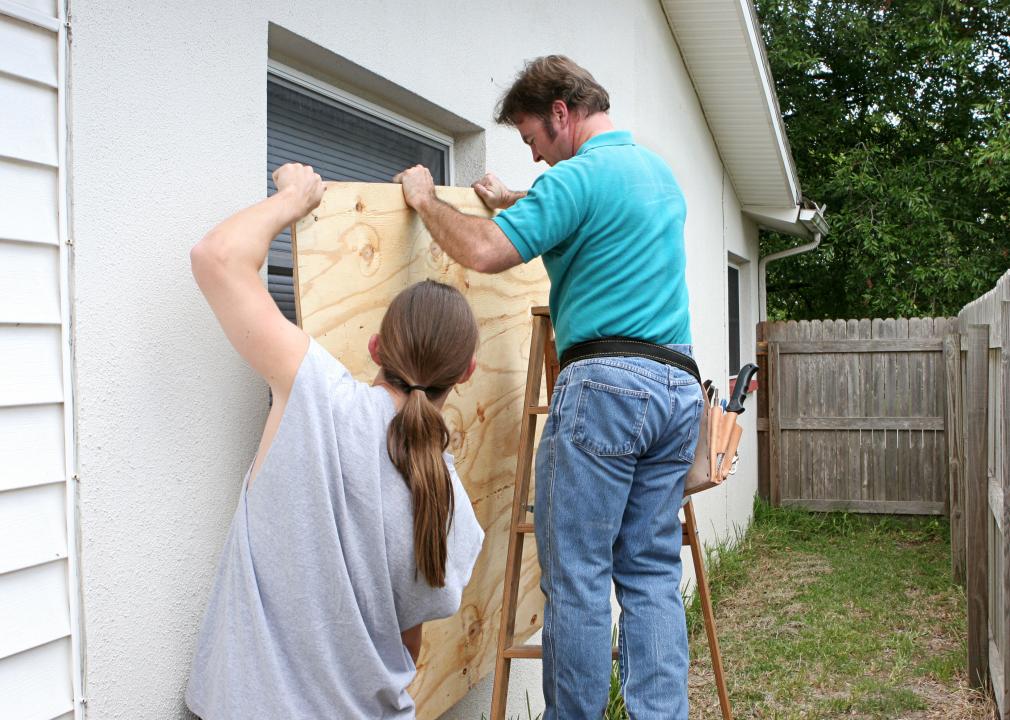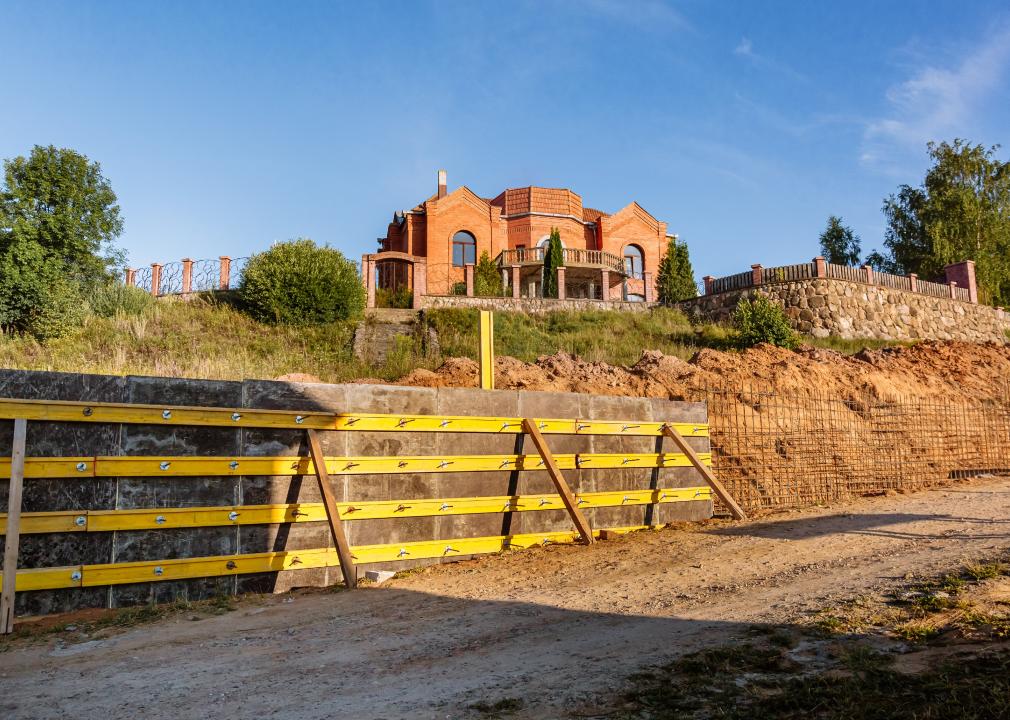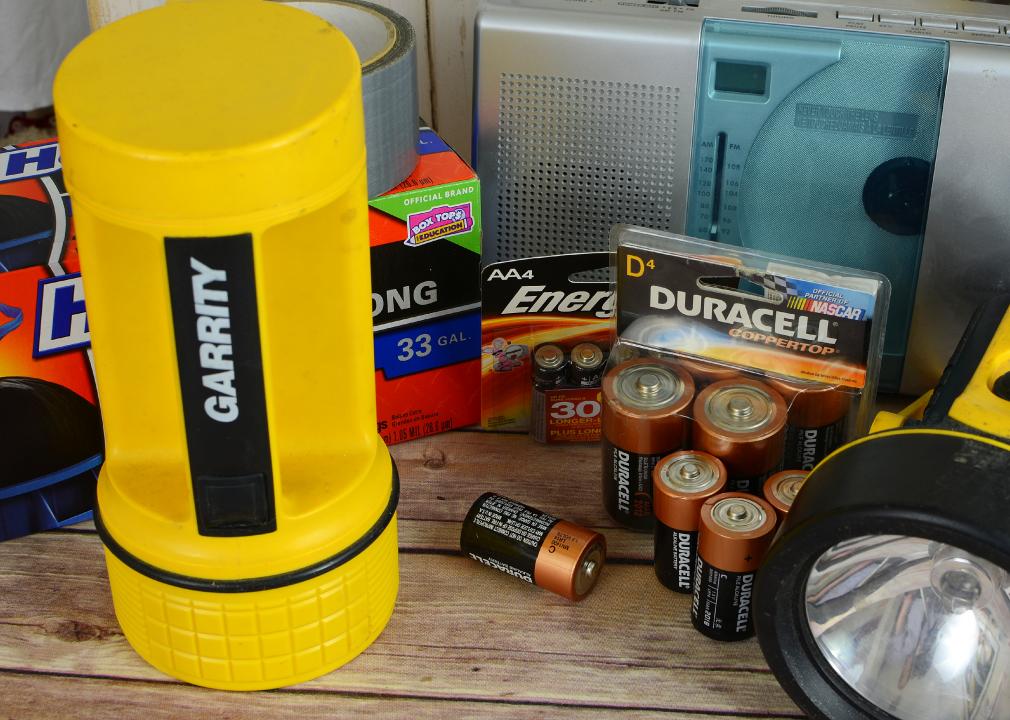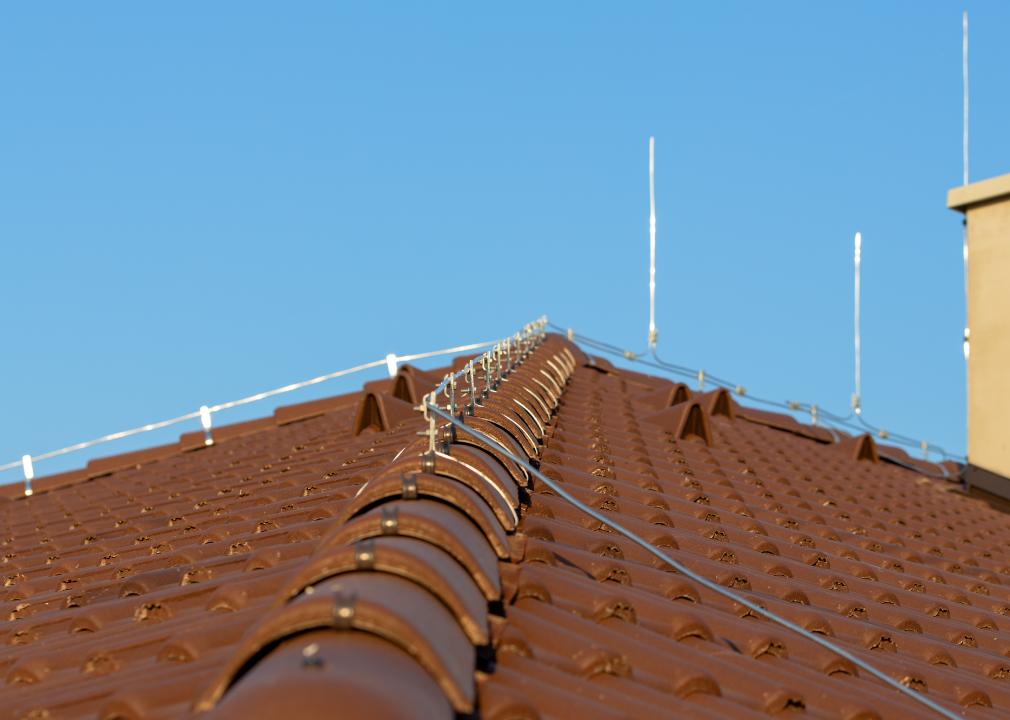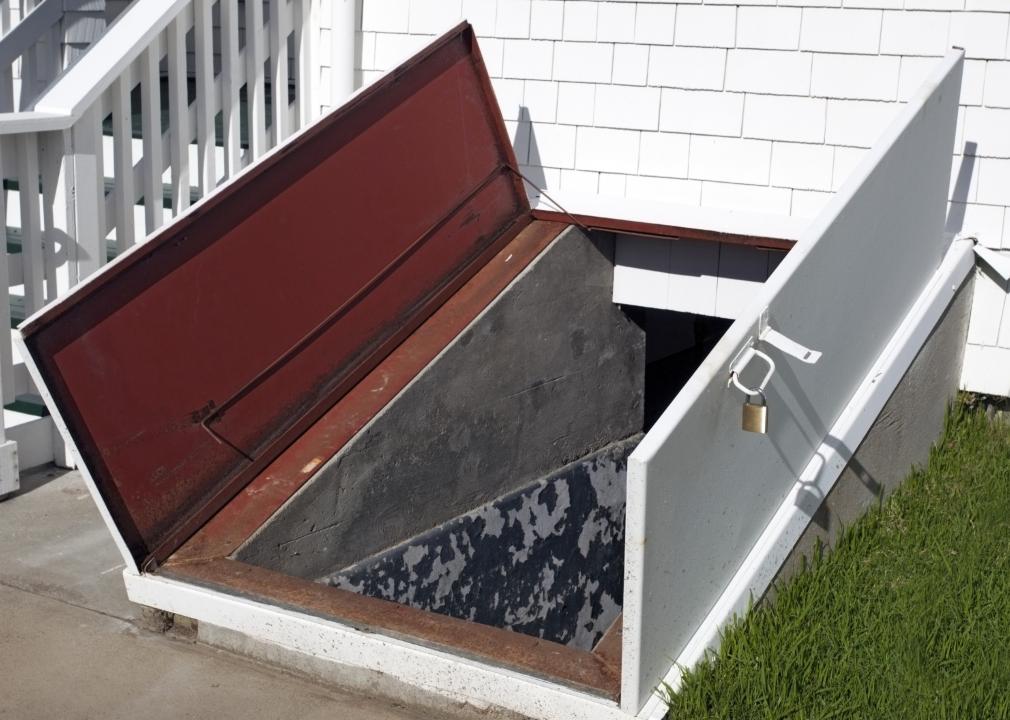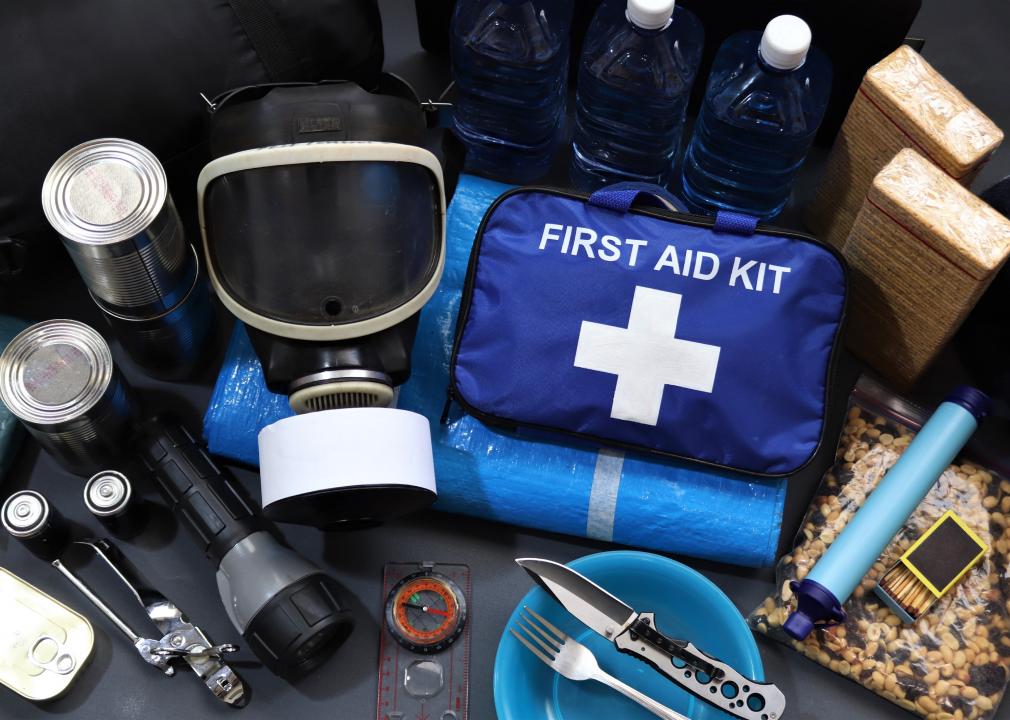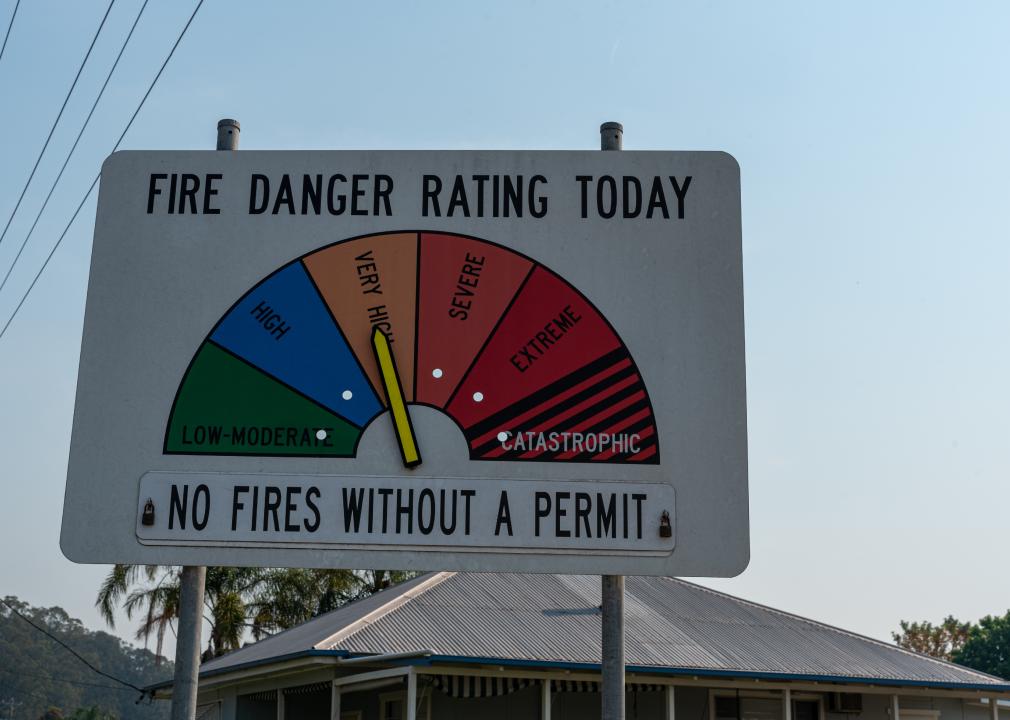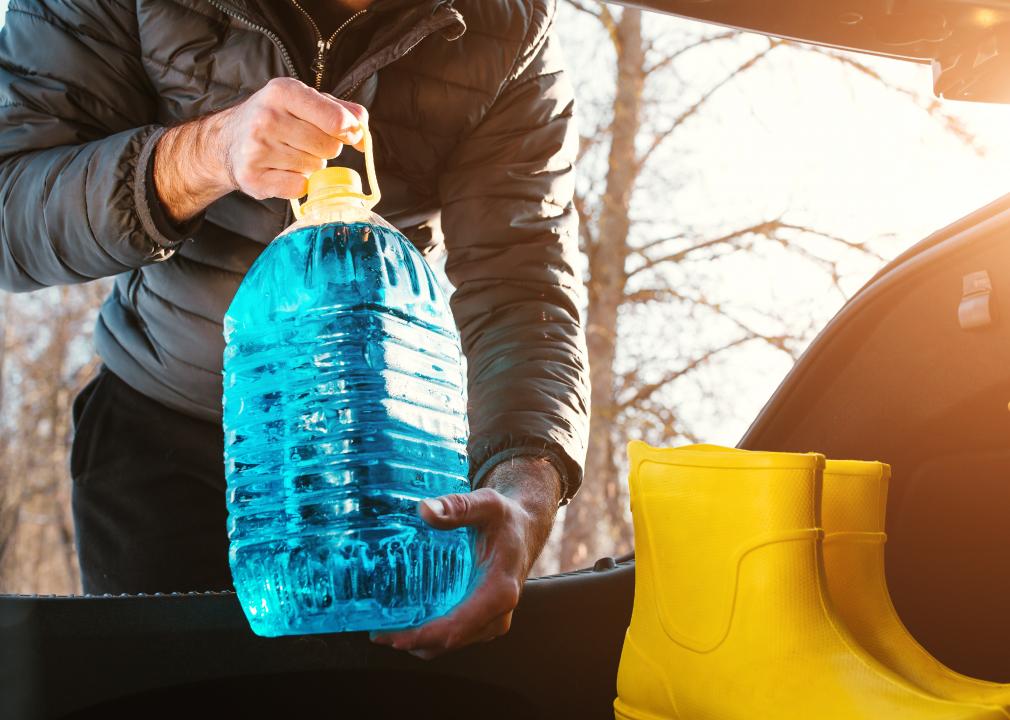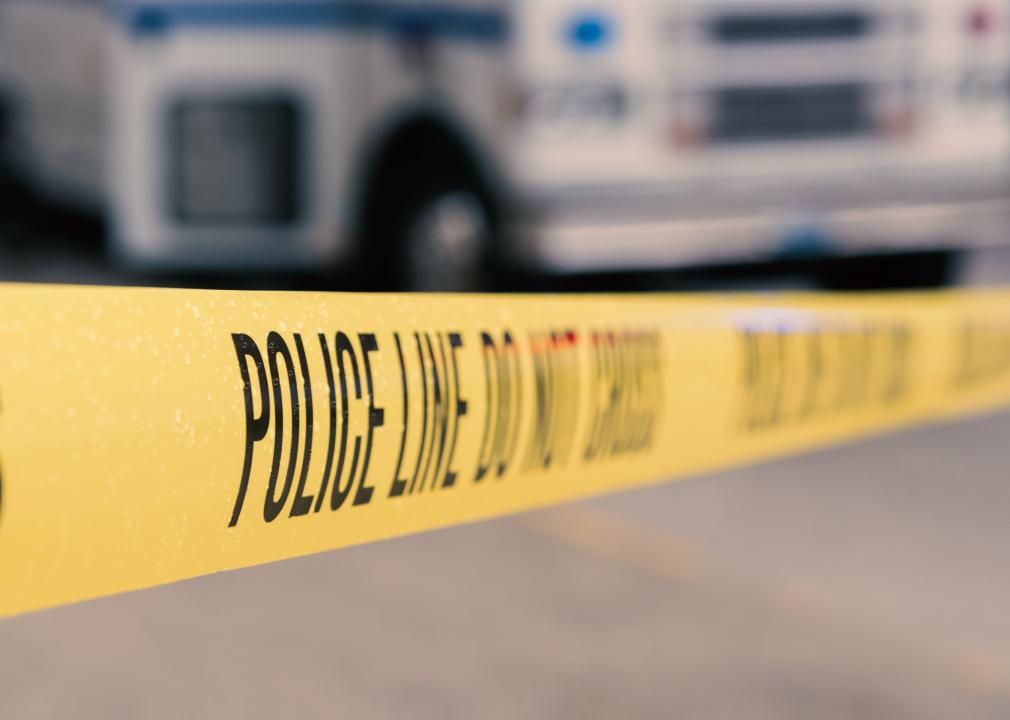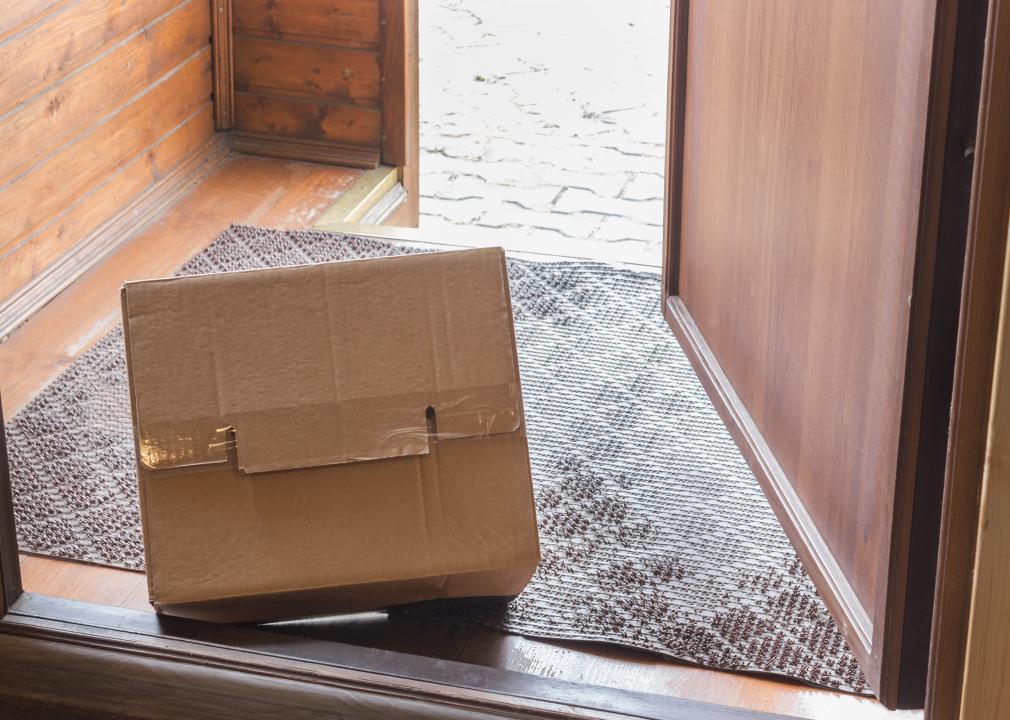How to prepare for 15 types of emergencies
Roger Brown Photography // Shutterstock
How to prepare for 15 types of emergencies
In the 18 months since the coronavirus first hit the United States, an almost infinite number of things have changed. Among them is the way people in the country respond to emergencies and natural disasters.
In some ways, these changes have been for the better. For example, local governments, fire departments, law enforcement agencies, and hospitals are now working with the private sector to enhance response efforts. This means people in need or in danger get assistance much quicker than in the past. Additionally, important information is disseminated much faster, allowing communities to respond in more helpful and meaningful ways.
On the other hand, the pandemic has caused many potential disaster resources to shut down. Agencies that would have provided relief or buildings that may have acted as hurricane or tornado shelters are no longer open. This means individuals need to be more prepared than ever should a disaster hit their area.
Valley Food Storage consulted the Federal Emergency Management Agency’s list of disasters and emergencies and selected key ways to stay prepared for a variety of emergency scenarios. Using information from government organizations like FEMA, the Ready Campaign, the Centers for Disease Control and Prevention, and the Red Cross, dozens of steps to ensure you and your loved ones are safe should anything from a power outage to a nuclear explosion hit your area have been compiled.
![]()
David Pereiras // Shutterstock
Earthquake
Earthquakes, the violent and sudden shaking of the ground, are caused by the breaking and shifting of subterranean rock. Each of the 50 states is at some risk of an earthquake, though the West Coast is considered at higher risk than the rest of the country, as the area is situated on the boundary of major tectonic plates. The IRIS Consortium reports that mid-level earthquakes occur about 20 times per year, but that massive quakes, like the 1964 9.2 magnitude quake that occurred in Prince William Sound, Alaska, are much rarer. The Ready campaign suggests that folks who live in high-risk areas always be prepared for a quake by having ready kits—containing food, water, portable chargers, first aid supplies, sanitary supplies, and a whistle—in their homes, offices, and cars. Assessing your home’s structure, making necessary repairs, and securing all furniture and decorative objects are other ways to ensure potential damage is limited.
Margarita Young // Shutterstock
Extreme heat
Extreme heat is a period of high heat—above 90 F—and humidity that lasts for a period of two to three days or longer. It is the most common and dangerous extreme weather event we experience in the United States and is responsible for the highest number of weather-related deaths each year.
Prepare for extreme heat by ensuring that you’re properly hydrated and have plenty of fluids on hand—at least three-quarters of a gallon per person—for all members of your household. Cover your windows and glass doors with curtains or window reflectors to keep the heat from seeping into your house, and have backup cooling options available should your air conditioner fail. Fans and local cooling centers are good examples. Finally, know the signs for heat-related illnesses like heat stroke and heat exhaustion, and be prepared to reach out to your medical providers if necessary.
Monkey Business Images // Shutterstock
Flood
As with earthquakes, every state in the United States is subject to flooding at any given time. This type of natural disaster is the most concerning as floods are the most frequent and costly weather event and seldom come with much warning, happening in as quickly as a few minutes. As a result, it is essential that you be prepared for a possible flood at all times, especially during rainy seasons. The best ways to do this are by purchasing flood insurance, preparing emergency kits with nonperishable food, bottled drinking water, and sanitary supplies, and ensuring all essential documents are stored in an easy-to-find, waterproof container. Homeowners should also bring in or tie down all outdoor furniture and turn off any propane tanks that may be on their property. If there is time between the issuing of a flood warning and the event itself, unplug any appliances in order to avoid a power surge, and move all valuables to higher ground to ensure their safety.
Lisa F. Young // Shutterstock
Hurricane
Primarily affecting Gulf Coast and Southern Atlantic seaboard states, hurricanes are massive storm systems that form over the ocean and move onto land, bringing high winds, heavy rain, flooding, and tornadoes. Typically, hurricane season annually runs from June 1 through Nov. 30, though the Centers for Disease Control and Prevention suggests all individuals who live within these hurricane zones be prepared well in advance of that time period. To prepare for these inevitable storms, sign up for notification services, have tested evacuation plans in place, prepare necessary go bags—with everything from clothes to shelf-stable food and water to medications—and round up important documents, as suggested by the Ready Campaign. Homeowners should also ensure that their insurance is up to date and that their properties are protected by installing sewer backflow valves, cataloging belongings, and anchoring fuel and propane tanks.
Hanna Taniukevich // Shutterstock
Landslide
While landslides aren’t as common as many of the other emergencies on this list, they do happen, typically in the aftermath of other major weather events such as hurricanes, flooding, heavy snowfall, earthquakes, and volcanic eruptions. Risk factor increases not by where in the country you live, but by the type of terrain on which you live—folks who live at the top or base of slopes, in areas frequently affected by forest fire, or in areas where landslides have happened in the past are more likely to experience this type of disaster. The best way to prepare for coping with a landslide is to know your risk. An assessment of your property or location by a qualified geotechnical professional can be invaluable, as can following proper land usage procedures. Other solid ways to be ready for a potential landslide include subscribing to community warning systems, protecting your property by building channels or deflection walls to help direct debris flow, and having an evacuation plan in place should the need arise for one.
Studio MDF // Shutterstock
Nuclear explosion
While the United States has never experienced a nuclear attack via a nuclear weapon on home soil, the risk level is currently at a historic high. Six major cities—including New York, Chicago, Houston, Los Angeles, San Francisco, and Washington D.C.—are the most likely target of a potential attack, according to Irwin Redlener, a Columbia University public-health expert. When preparing for a potential nuclear attack in one of these major cities or for a radiation emergency anywhere in the country, there are a few things you can do. First, identify a suitable shelter, ideally a location underground or in the middle of a building made of concrete or bricks. Second, put together an emergency go-kit that contains the basic necessities like food, water, first aid supplies, and sanitizing equipment. Finally, identify and subscribe to notification and information systems if possible.
Perry Correll // Shutterstock
Power outage
Power outages can happen for a number of reasons, from extreme heat or cold to heavy storms to equipment failure. These events can be incredibly tricky because there is no way of knowing how long they may last, and they impact almost every area of our lives from communication to access to water to transportation. If you live in an area where power outages are common, such as a major city where the grid is often overwhelmed or a rural area that sees a lot of storms, prepare by taking stock of the items needed that require electricity. Come up with backup power plans for these appliances, like a generator, and ensure you have enough flashlights and batteries for all household members. Food and fresh water are a major concern during power outages, so be well-equipped with enough shelf-stable food and bottled water to last for several days.
boitano// Shutterstock
Thunderstorm, lightning, or hail
According to the National Severe Thunderstorms Laboratory, the United States sees about 100,000 thunderstorms each year. Of these storms, 10% are severe, meaning they contain hail 1-inch or larger, wind above 57 mph, or a tornado. These thunderstorms happen most often in the spring and summer months, though they are possible year-round. To prepare for these events, install surge protectors or a lightning rod, cut down trees that may fall on your home, and tie down or move all outdoor furniture inside. It would also be wise to have an emergency kit on hand similar to those used in case of a power outage or earthquake, which contains food, water, medical supplies, sanitization equipment, and necessary medicines.
Noel V. Baebler // Shutterstock
Tornado
Tornadoes are most common in the Great Plains, or center region, of the United States. In particular, tornado alley—which includes the states of Texas, Oklahoma, Kansas, Nebraska, South Dakota, and North Dakota—sees a lot of action with some areas getting up to nine tornadoes a year. If you live in this region of the country, it is absolutely essential that you have an emergency plan in place that includes possible shelter locations. Additionally, a well-stocked emergency kit is a necessity, as is a subscription to a community warning service. With more than 1,000 tornadoes touching down in the United States each year, it’s likely that Midwesterners will experience at least one in their lifetime, so taking a few moments to prepare now could save a lot of heartache in the future.
Roger Brown Photography // Shutterstock
Volcano
The American Geosciences Institute reports that there are 169 active volcanoes in the United States. The vast majority of them are in Alaska, though there are others in Hawaii, Washington, Oregon, California, Idaho, Nevada, Utah, Arizona, New Mexico, Colorado, and Wyoming. The primary concern when it comes to a possible eruption is ash, as it can travel for miles and can be incredibly dangerous to inhale. Those who live in a danger zone can prepare by having a shelter-in-place plan ready, which includes all the necessary supplies needed to remain inside for a number of days. Along with the standard items like food, water, and medicine, masks and safety goggles—that could keep ash from entering your eyes, nose, and mouth—would also be important to include. Those who live in a lava-flow zone should have all the same equipment, but an evacuation plan instead of a shelter-in-place plan.
Peter Galleghan // Shutterstock
Wildfire
Despite what news coverage may lead you to believe, the Congressional Research Service reports that more wildfires occur in the eastern half of the country than in the western half. That being said, fires on the West Coast are larger and burn for longer, making them both more dangerous and more damaging. Regardless of what state you call home, having a wildfire emergency plan in place is a good idea. Sign up for local warnings, know your evacuation zone, and have essential items—including masks to protect you from smoke inhalation ready to go during peak wildfire season, which is typically late May to early October. Prepare your property for potential burn. Use fire-resistant materials when building, ensure you have an outdoor water source with a working hose to put out small flames, and create a fire-resistant zone free of leaves and debris 30-feet or more from your home.
VanoVasaio // Shutterstock
Winter storm
The Northeast and Upper Midwest are famous for their frigid winters—daily temperatures in these areas hover between 19 F and 32 F during the colder months. Add snow and sleet into the mix, and these areas of the country are prime locations for winter storms. Winter storms can bring a loss of power, dangerous or impossible traveling conditions, and increased risk of hypothermia, frostbite, and car accidents. The good news about winter storms is that there’s generally ample warning. Unlike an erupting volcano, for example, you typically know about a storm 24-48 hours before it hits. This should provide time to do things like ensure you have plenty of supplies if you need to shelter in place, nab a backup generator, and bring any pets and cars under cover. Before the winter season hits, weatherproof your home by trimming any trees that could be felled by snow or high winds, insulate water lines and walls, and install storm-proof windows.
SeaRick1 // Shutterstock
Active shooter
In 2020, the FBI designated 40 shootings as active shooter incidents, a 100% increase from 2016. These attacks are on the rise and are likely to remain that way for as long as gun control laws remain lax. Because active shooter situations are generally random, there is really no good way to prepare for a possible attack, aside from knowing how to respond. The FBI recommends a “run, hide, fight” strategy. If you find yourself in the vicinity of an active shooter, your first and best option is to evacuate the area, leaving behind all nonessential items such as purses and cellphones. If evacuating is not possible, find a place to hide where the shooter may not find you, like a closet or behind a table. As a last resort—and only if your life is in danger—fight back, throwing items at the shooter or yelling to throw the attacker off focus.
Rawpixel.com // Shutterstock
Cyberattack
Many experts believe that cyberattacks are poised to be a new brand of warfare. Rather than shooting guns or throwing hand grenades, countries will attack each other by compromising computer systems, essentially knocking down large parts of their infrastructure. Should a cyberattack of that size happen, there might not be much you can do to protect yourself on an individual level. However, there are a plethora of ways you can prepare for smaller-scale cyberattacks including keeping antivirus software updated, regularly backing up your files, and protecting your home network connection. Using hard-to-guess passwords and two-factor authentication methods are also great ways to ensure your private information remains private.
Pavel Chepelev // Shutterstock
Explosions
Explosions are another type of emergency that are incredibly hard to prepare for as you never really know where or when one may happen. The best advice the Ready campaign has to offer is to have emergency kits on hand both at home and in your car, which include medical supplies, sanitizing supplies, and masks to protect from particles and dust, and to have a list of places you could shelter should that be necessary. Knowing how to identify a suspicious package or letter could also save you from becoming the victim of an explosion. Look for packages that aren’t addressed to a specific recipient, have excessive postage, or have protruding wires and report them to the police immediately.
This story originally appeared on Valley Food Storage and was produced and distributed in partnership with Stacker Studio.
